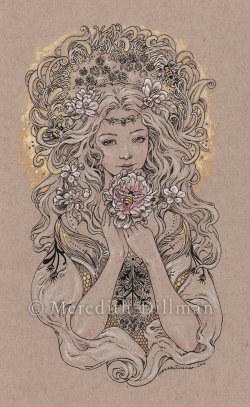I want to analyze with you all, what Spring represents according to many cultures, by starting with Paganism, and then seeing how the topos of Spring evolved in the Middle Ages and in modern times.
Greeks and Romans had no doubt: spring stands for beauty, re-birth of nature through beautiful flowers, love, as we can see in the painting that celebrate all these things. Botticelli's Primavera.

We can see a beautiful meadow filled with wild flowers, a meadow formed through the shadowy branches of the orange trees. Orange trees filled with fruit and zagara flowers.
In the center, Venus, as pious and candid as the Virgin Mary, is the queen of this procession. She is accompanied by the Three Graces: Euphosyne, Aglaea and Thalia, and Mercury, wearing a red tunic, and holding his caduceus. On the right there is a goddess (identified as the Spring or as Hybla, the goddess of fertility in Sicily) and then god Zephyrus, the god of the west wind chasing and abducting the nymph Chloris, turning her into Flora.
Cupid, god of Love, son of Venus, is above her mother.
Significance
For those who have read the Pervigilium Veneris - Wikipedia, this is a clear artistic representation of that Latin poem.
In that poem, called the the Vigil of Venus, spring is celebrated as the triumph of Love and the rules of rule are dictated by Venus. The refrain is "He who has never loved, may he love tomorrow, and he who has already loved, may he love tomorrow too.".
The poet describes the birth of Venus, then Venus herself orders other deities to join her in the divine procession. The nymphs, the maiden Delia, and Apollo, Ceres and Bacchus too. She orders Hybla, the goddess of fertility to wear a dress of thousands of flowers, as many as those in the entire Aetna flatland. There's also Cupid, whom the girls should never trust.
Venus is considered the one who turned Trojans into Romans, by giving birth to Aeneas and his own race, by whom Julius Caesar descends.
Greeks and Romans had no doubt: spring stands for beauty, re-birth of nature through beautiful flowers, love, as we can see in the painting that celebrate all these things. Botticelli's Primavera.
We can see a beautiful meadow filled with wild flowers, a meadow formed through the shadowy branches of the orange trees. Orange trees filled with fruit and zagara flowers.
In the center, Venus, as pious and candid as the Virgin Mary, is the queen of this procession. She is accompanied by the Three Graces: Euphosyne, Aglaea and Thalia, and Mercury, wearing a red tunic, and holding his caduceus. On the right there is a goddess (identified as the Spring or as Hybla, the goddess of fertility in Sicily) and then god Zephyrus, the god of the west wind chasing and abducting the nymph Chloris, turning her into Flora.
Cupid, god of Love, son of Venus, is above her mother.
Significance
For those who have read the Pervigilium Veneris - Wikipedia, this is a clear artistic representation of that Latin poem.
In that poem, called the the Vigil of Venus, spring is celebrated as the triumph of Love and the rules of rule are dictated by Venus. The refrain is "He who has never loved, may he love tomorrow, and he who has already loved, may he love tomorrow too.".
The poet describes the birth of Venus, then Venus herself orders other deities to join her in the divine procession. The nymphs, the maiden Delia, and Apollo, Ceres and Bacchus too. She orders Hybla, the goddess of fertility to wear a dress of thousands of flowers, as many as those in the entire Aetna flatland. There's also Cupid, whom the girls should never trust.
Venus is considered the one who turned Trojans into Romans, by giving birth to Aeneas and his own race, by whom Julius Caesar descends.
Last edited:



